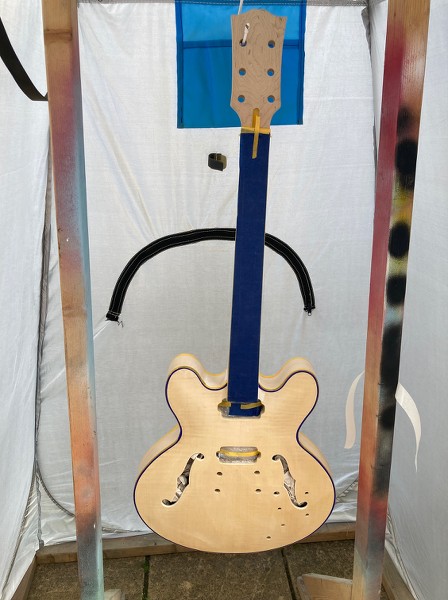Hi Everyone,
This is my first ever guitar build. The kit is DGM-3F. I sadly am not able to work on it much due to other responsibilities. I have done a dry build and everything seems to be fine. I haven't noticed any deficiencies. My goal is to at least get it painted or stained before August 14th so I get it done before it starts to get cooler outside because I do not have the resources/room to paint inside. I also leave on the 14th to go on a trip, so it would be great if I get some of the bigger stuff done before then. This leads me to my concerns/questions.
My guitar kit has a flame maple veneer and I am not sure what that means other than the guide says I can not sand over it because it is very thin.
So, how should I prepare the guitar for painting or staining?
Can you even paint over a flame maple veneer? Would the paint soak into the veneer or just cover it up and it would not be seen?
Also when painting the body I have seen people screw in a mock neck so they can spray paint the body without getting too much paint on themselves and they can hang it by that mock neck. My guitar is a glue-in neck so not sure what I would do for that other than just painting the whole thing after gluing the neck in. Or am I able to screw in a mock neck and then after painting or staining glue in the neck?
I'm sure I will have a lot more questions in the future, but I hope this will be a great experience.
-Nathan





 Reply With Quote
Reply With Quote


